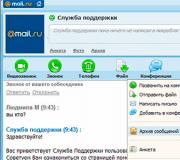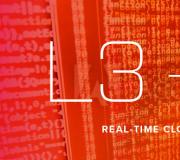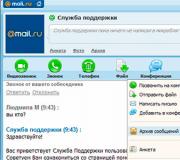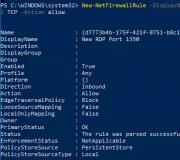How to create your own textures. How to make your own texture pack for Minecraft Higher resolution textures
In order to edit textures, you will need an image editor that supports transparency (paint will not work) and at least basic knowledge of using this program. The most popular is photoshop, there is also gimp and many other programs.
If you already have a suitable program, then you need to take some texture as a basis. If you want to do everything from scratch, then you can take standard textures: (downloads: 2280)
You unpack the archive and get a folder with subfolders and pictures. Then you just need to find the corresponding picture and edit it.
Let's look at the folder structure and what you can find there:
| terrain.png | The most important file is the block textures. Lies at the root |
| pack.png | The icon of your texture pack, which will appear in the list of texture packs in the game. |
| pack.txt | The signature of your texture pack, which will appear in the list of texture packs in the game. |
| ctm.png | File for combining blocks. For example, if you place 2 chests next to each other, you will get a double chest. Or glass connections. |
| particles.png | Particle textures. Lights, potion effects and other little things that fly in the air. |
| achievement | Folder with textures for the interface and achievement icons. |
| armor | Folder with armor textures (chain - chain mail, cloth - leather, diamond - diamond, gold - gold, iron - iron). There is also a file witherarmor.png related to the Wither mob and power.png - the texture of the effect when lightning strikes you or the mob. |
| art | The folder contains 1 file with painting textures. |
| environment | Folder with textures of clouds, rain, snow and lighting. |
| gui | Folder with game interface textures, as well as item textures in items.png. |
| item | A few special items such as arrows, trolleys, doors, chests. There is also a texture for experience balls (xporb.png). |
| misc | A folder of different textures: color schemes, day and night cycles, lighting, water texture. |
| mob | Mob textures folder. |
| terrain | Moon and sun. |
| title | Logo and background in the menu. |
Don't be afraid to experiment!
And don't be afraid to use transparency. This is the only way to learn all the subtleties, the only way to learn how to make unique textures. Explore other people's creations that you like and don't be afraid to experiment yourself!
For example, paintings can be made shaped using transparency. You are not limited to a square frame:


Or zombies, like player textures, have a slot for a “hat”, knowing this you can create interesting textures, for example, the following zombie texture was made:

But in reality it looks like this:

Higher resolution textures
To create textures of higher resolutions, you need to either take textures of the desired resolution as a basis or manually stretch standard textures to the desired resolution (for resolution 32 stretch 2 times, for 64 4 times, etc.). No further special actions are needed.
You should stretch without using anti-aliasing, otherwise the resulting textures will be blurry (if you are going to redo everything, then this is not particularly important), for example, in Photoshop, when resizing, you need to select interpolation “By adjacent pixels”:

For Gimp you need to select the interpolation quality as “None”:

Then the appearance of unchanged blocks will remain standard.
Random monsters
It can be done so that mobs can have different models. Not 100 identical zombies, but a motley crowd. For example, let's make random textures for zombies. To do this, draw as many zombie textures as we can and save them as “zombie.png”, “zombie2.png”, “zombie3.png” and so on. As a result, we get random textures for zombies. This can be done with any mobs.
1. What is required to create a texture pack
— Archiver, for example, WinRAR
— Image editor that supports transparency. (Standard paint will not work, you need Photoshop, Paint.net or GIMP)
—Basic knowledge of this editor
— Another texture pack that you want to use as a basis.
2. First, download the ‘clean’ texture pack here -
I advise you to download the standard pack for your pack and use it as a basis. Although you can take any pack.
Download (preferably unzip), place it in a convenient place and see the image below:
First folder (assets)- this is what you downloaded. In the future I will tell you what to do with the rest of the files (don’t touch them for now). Extracting the folder assets to a folder with the same name. This is the third folder, and we will work with it. Here are its contents:
blocks– all block textures.
effect- better not touch it.
entity— the textures of all mobs and portals and some items (like a stand with armor) are stored there.
environment— textures of rain, sun and moon are stored.
font — important files for the game are stored there (they cannot be touched)
gui– an important folder, there are many important images here. Various in-game game files. Anvil textures background achievements, etc. etc. (in principle, I think you’ll figure it out with this folder)
items– textures of all objects.
map - the texture of the map (in the game itself), not the world.
misc - there is a barrier texture and an underwater texture.
models – armor textures of all types (diamond, iron, etc.)
painting— textures of all paintings in minecraft.
particle - particle textures (what the hunger scale, health scale, etc. look like)
3. Changing textures
Open the folder into which we extracted the contents of the pack.
First, open the folder you need. For example, you want to change the texture of a diamond block, so go to the folder blocks then we find diamond_block and throw the file into an editing program (preferably PhotoShop)
I will show an example using this program. For example, I want a creeper's face to be on a diamond block:
Now we change the cover of our texture pack. We find pack.png throw the file into PhotoShop and edit. For example, I did this:
Now we replace pack.png to your pack.png, which you did. Now when you enter the game and select the desired texture pack in the settings, our cover will be visible:
4. Check
Let's finish the pack and check it out. We add the contents of our folder to a new zip archive, the name of which will be the name of the pack. In my example the name will be dsa1.zip.
I added all the folders and all the images. In general, you don’t have to add everything, you only need to add what you changed. Please understand that if you remove an image from your pack, the standard image will be used in its place. And if your image does not differ from the standard one, then why add it, it will only add “weight” to your pack.
We copy our pack to the texturepacks folder, which is located in the game directory. Now turn on the game and go to the texture packs menu and here is our pack:
Loading the world. Well, now let's put our diamond block and check everything. As you can see, everything works (our redrawn texture is displayed)!
That's all. Your simplest pack is ready. Of course, you can now make your own pack and customize it for yourself!
You can write ideas for the next articles in the comments, and if you have questions, write them also in the comments or
I think that creating texture packs is quite easy, but many of our users do not know how to do it. So I’ll show you and tell you about it. I won’t be able to tell you everything at once, so only the first chapter for now.
1. What is required to create a texture pack
Archiver, for example, WinRAR. (You should have it, because how did you install Minecraft).
An image editor that supports transparency. (Standard paint will not work; you need Photoshop, Paint.net or GIMP).
- Basic knowledge of this editor.
Another texture pack you want to use as a base.
- Head, hands and patience.
2. Let's sort the pack into pieces
I advise you to download the standard pack for your pack and use it as a basis. You can download it. Although you can take any pack.
Download, place it in a convenient place and see the image below:
The first archive on the left is what you downloaded. Let's extract its contents into the same folder, we'll get a second archive - this is the pack itself, which in theory should be installed, but that's not what we need it for. Extract the contents of the package to a folder with the same name. This is the third folder, and we will work with it. Let's take a look at its contents:

Achievement - in this folder two images: bg - these are textures for the achievements menu, icons - I don’t know its purpose, so they can be deleted.
Armor – located here textures of all types of armor. Moreover, under number 1 there is a hat and a jacket, and under number 2 there are pants and sneakers. And the power image is like the texture of a charged creeper.
Art – there is one image in this folder – kz, it contains the textures of all the paintings.
Environment – this folder stores images with textures of phenomena: rain, snow, clouds and light.
Font – this is where the font is stored. If you are playing with a cracker, immediately delete this folder.
Gui is an important folder, there are many important images here. Items – item textures, icons – interface icons, gui – quick access panel and buttons, background – background for the menu, unknown_pack – icon for a pack without an icon, slot – images for the statistics menu, allitems, container, crafting, furnace, inventory, trap - game menus. There are also two unused images crash_logo and particles, they can be deleted.
Item – in this folder you can find textures for arrows - arrows, chests - chest, largechest, boats - boat, trolleys - cart, signs - sign and animation of experience spheres - xporb. But door is not used, can be deleted.
Misc - here we have this: dial - an image for a clock, explosion - an explosion animation, mapbg - the texture of a map in your hands, mapicons - icons for a map, particlefield - a starry sky, pumpkinblur - an image that blocks your view when you wear it on your head pumpkin, shadow – shadow texture. You can easily change them, but the rest of the images perform software functions, so they must be changed very carefully, or better yet, simply deleted.
Mob – here are all the mob textures, you can change or delete them.
Terrain – this folder contains the textures of the sun and moon.
Title – here are images for design: mojang – developer logo, mclogo – game logo in the main menu. I still don’t understand why black is needed. But bg is an interesting folder that contains panoramas of the game that serve as the background of the main menu. You can make your own panoramas from screenshots, just be careful with the names and sizes.
Pack – pack icon in the pack selection menu.
Pack – a text file, the text of which will be written under the name of the pack in the menu selection of packs.
Particles – this image contains effects: smoke, splashes, etc.
Terrain is the main image of the pack; the textures of all the game blocks are collected here.
3. Drawing
Open the folder into which we extracted the contents of the pack.
First, let's open terrain.png, as I already said, this is the basis of the pack.
I use photoshop. You can also use other editors that support transparency.

Let's make a change. For example, I never liked the texture of cobblestone, so I change it. Please note: I put the texture on a new layer so that I can erase it, and I also selected the texture so that I don’t go beyond the boundaries. Although these are the subtleties of mastering Photoshop, and do not apply to the creation of packs.

I also changed the glass texture.

You can change not only terrain.png, let's open items.png from the gui folder.
I want to change the texture of the scissors.

Let's give the pack distinctive characters: open pack.png and pack.txt.
I changed pack.png quite a bit - the pack icon, but you can do whatever you want there, insert another picture, for example. Well, I added my own inscription.


4. Check
Let's finish the pack and check it out. We add the contents of our folder to a new zip archive, the name of which will be the name of the pack.

Here are the contents of my pack:

I added all the folders and all the images. In general, you don’t have to add everything, you only need to add what you changed. Please understand that if you remove an image from your pack, the standard image will be used in its place. And if your image does not differ from the standard one, then why add it, it will only add “weight” to your pack.
We copy our pack to the texturepacks folder, which is located in the game directory. There is no need to patch our pack, so we immediately turn on the game. We go to the texture pack menu and here is our pack:


Loading the world. Here is my house, and as you can see, the textures of the cobblestones, glass and scissors are exactly the way I painted them.
That's all. Your simplest texture pack is ready. You can, of course, start making your own pack now, but you would benefit from the following chapters of the tutorial.
In the following chapters of the textbook:
- Creation of higher resolution textures.
Creating your own water, lava, fire and portal textures.
Tips for painting textures.
Answers to your questions
P.S. This article was still written at 15:00. But my browser crashed and the text of the article was lost. The second time I wrote an article in Word, at 17:00 the article was already ready, but Windows crashed, the computer rebooted and as a result, all the text was lost again. I think someone at the top doesn't want me to add this article.
This article is the first in a series of articles dedicated to creating resource packs for Minecraft. The author of the articles is Denis (also known as Cool_boy or prettydude).
All articles will primarily concern Minecraft Java Edition; In the future, perhaps the topic of creating resource sets for Minecraft Bedrock will be touched upon.
fromgate
A little history
Texture packs (texture packs) were added to the game in version Alpha 1.2.2 (7 years have passed!). Back then, all the textures in the game were stored in one file, which did not allow players to use an extension larger than 16x16 or create animations. In version 1.5, textures were divided into files, and the ability to create HD textures and animation was added. In 1.6, texture packs were replaced with resource packs (resource packs), it became possible to add your own sounds, change translations, titles and much more. Since version 1.7, the Optifine mod has merged with MCPatcher, adding even more opportunities for resource pack creators. These are the ones we will consider in the future.
Creating a simple resource pack
All resource pack files should be located in the resourcepacks folder in the root of the game. For the game to see your resource pack, it must be a folder or an archive in .zip format with a pack.mcmeta file inside. You can even edit it with a simple notepad, but you must remember that this is a JSON format (you can check the correct spelling on the website yaml-online-parser.appspot.com). Example pack.mcmeta file:
( "pack":( "pack_format":3, "description": "Description of the resource pack" ) )
"pack" :( "pack_format" : 3 , "description" : "Resource Pack Description" |
Pack_format is the version of the resource pack; it must be specified, otherwise Minecraft will complain that you have an incompatible version. 1 for versions below 1.9. 2 for versions 1.9 and 1.10. 3 for versions 1.11 and 1.12. 4 for version 1.13 (at the time of writing).
description — description of the resource pack in the resource pack selection menu. You can use the paragraph sign
§ to add colors.
To add a thumbnail that is visible in the menu, add an image called pack.png to the folder in the pack.mcmeta file (I recommend using a proportional size of 64x64).
Your resource pack will now be visible to the game, but it’s empty! To add files to it, create a folder assets/minecraft and use the name of the folders/files from the game to replace them. You can also change mod files. To do this, you need to use the assets/MOD_NAME folder. Remember, all files must be in lowercase, otherwise the game will not see them.
How can I look at the files in Minecraft itself?
The English-language wiki has a ready-made list of files in the game, .
Open the file versions/your_version/your_version.jar (for example versions/1.12/1.12.jar) with a regular archiver. Inside is the assets folder, which contains all the game textures.
The sounds are located in the assets folder in a renamed form; to find the desired sound file, you need to open the file indexes/VERSION.json, find the name of the sound, and remember its hash (this will be the name of the file).



